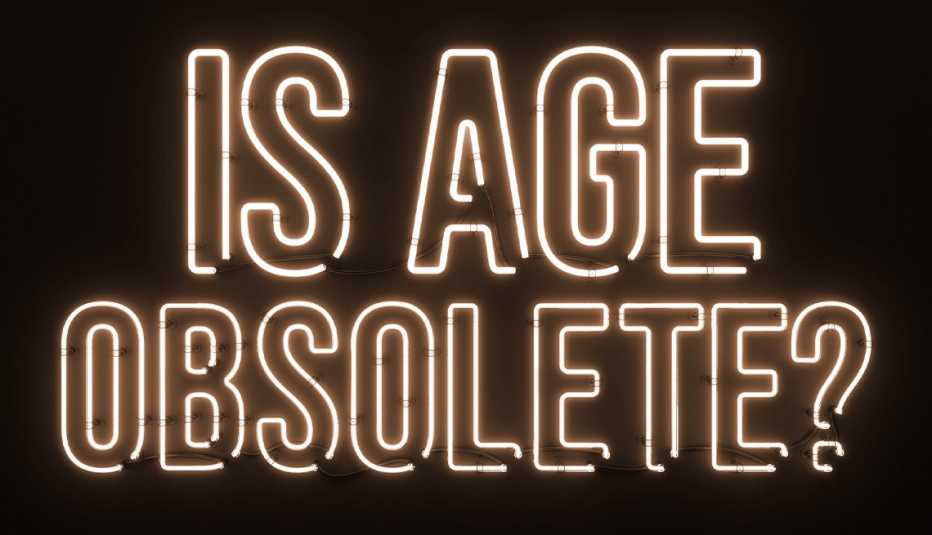Staying Fit


American culture is awash in feel-good aphorisms about aging: “60 is the new 40,” “Age is just a number”; you know the drill. These are fine messages for T-shirts and greeting cards, but do they really reflect your experience of aging? They certainly don’t reflect mine. When we’re talking about age — seriously, I mean — we ought to be embracing quite a different message — one that, in its way, is even more positive. Better yet: It’s actually true.
First, a few facts. In the past 100 years, life expectancy at birth in the United States has risen by about 20 years. Granted, that good-news story has darkened quite a bit lately, with the COVID pandemic and drug overdoses claiming the lives of too many Americans. Even so, the expected life span of a baby born in the U.S. today is 77.5 years. For 1923 babies, it was 57.2.
AARP The Magazine Special Edition
AARP takes a look at how aging has evolved and improved over the decades — and how it likely will change in the years ahead.
But wait. If you’ve lived long enough to qualify for AARP membership — and dodged the accidents and ailments that tend to befall younger people — your odds of living a good, long life are even better than a day-old baby’s. According to the Social Security Administration, the expected life span of a modern American 50-year-old is 80.4. For 75-year-olds, it’s 86.4.
So, forget all that blather about which age is the new 40 or the new 30. Let’s talk about the great gift of our extended longevity that Americans are experiencing right now — in unprecedented numbers and, for many, in good health. What can we do with those extra 20 or 30 years? And what can those years do for us? Because the longevity bonus doesn’t just mean that we’ve got more time to enjoy our lives. It means we’ve got more time to change and grow. As a wise man once put it, “Aging is an extraordinary process whereby you become the person that you always should have been.” I’ll save you the time it would take you for a Google search. It was David Bowie.
With time, you become more appreciative of the world around you. The psychiatrist Oliver Sacks wrote poignantly about this phenomenon the year that he turned 80. “One is more conscious of transience and, perhaps, of beauty,” he wrote. Sacks felt himself “freed from the factitious urgencies of earlier days, free to explore whatever I wish, and to bind the thoughts and feelings of a lifetime together.”


AARP Membership— $12 for your first year when you sign up for Automatic Renewal
Get instant access to members-only products and hundreds of discounts, a free second membership, and a subscription to AARP the Magazine.
Nobody’s saying it’s all upside, of course. After a half-century on Earth, most of us wake up every morning with aches and pain, from injuries or just time’s wear and tear on the body. It takes energy and resilience to overcome our duly allotted quotient of pain and face the day as if your knees didn’t hurt and your back doesn’t twinge. But every time you manage it, you add to your store of resilience. You become more committed to whatever you’re doing. To hear Bowie tell it, you may even become more yourself.
Bob Love
Editor in Chief
AARP Publications


Extra, Extra, Read All About It
On AARP’s 65th birthday, we have a gift for you—a free bonus issue
So, here’s some news you can use. We've published a new and completely different edition of AARP The Magazine. It’s a free, fully digital version of the magazine you love, with all the great information, news and service you’ve come to expect. It's available right here on AARP.org, and is also accessible via the AARP Now app and AARP Pubs app. With this all-digital issue, we’re celebrating the 65th anniversary of AARP (born in 1958) by going deep into the subject of aging in America. We’ll get into how the world has changed since our founder, Ethel Percy Andrus, first conceived of empowering older people through unity. I guarantee you’ll be surprised by what you read.
You’ll also find a report on “super agers,” people who remain sharp and vital at 80 and beyond; expert advice on whether — and where — to downsize; a feature on the “new normal” for healthy people with chronic health conditions; a brain-fitness test; and the single best exercise for strength and mobility. And we’ll spotlight some prominent people who defy the stereotypes of aging, including businesswoman and best-selling author Martha Stewart, ready to talk about her boundary-breaking appearance — at 81 — on the cover of Sports Illustrated’s swimsuit issue. We’ll salute fellow age defiers, like David Hockney, one of the world’s greatest living artists, who is working with vigor into his 80s, and Dusty Baker, managerof the Houston Astros baseball team, who won his first World Series at 73. After you’ve read our all-digital issue, I’d love to hear what you think of it.




































































More From The Age Issue
'AARP The Magazine' Age Issue: A Digital Only, Bonus Edition
To mark our 65th birthday, AARP is publishing an extra, digital-only edition of 'AARP The Magazine'
How the Life of a 65-Year-Old Has Evolved Since 1958
On the 65th birthday of AARP, we look at how much (and how little) things have changed
Timeline: AARP at 65
In celebration of our 65th birthday, here’s a look back at our history and a sneak peek of what’s to come